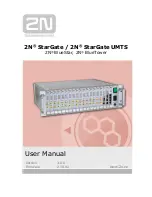
Prestige 662HW Series User’s Guide
Wireless LAN Setup
6-1
Chapter 6
Wireless LAN Setup
This chapter discusses how to configure Wireless LAN on the Prestige.
6.1 Wireless
LAN
Overview
This section introduces the wireless LAN and some basic configurations. Wireless LANs can be as
simple as two computers with wireless LAN cards communicating in a peer-to-peer network or as
complex as a number of computers with wireless LAN cards communicating through access points
which bridge network traffic to the wired LAN.
The WLAN screens are only available when a WLAN card is
installed.
6.1.1 Additional Installation Requirements for Using 802.1x
A computer with an IEEE 802.11b/g wireless LAN card and equipped with a web browser
(with JavaScript enabled) and/or Telnet.
A wireless station computer must be running IEEE 802.1x-compliant software. Currently, this
is offered in Windows XP.
An optional network RADIUS server for remote user authentication and accounting.
6.1.2 Channel
A channel is the radio frequency(ies) used by IEEE 802.11b/g wireless devices. Channels available
depend on your geographical area. You may have a choice of channels (for your region) so you should
use a different channel than an adjacent AP (access point) to reduce interference. Interference occurs
when radio signals from different access points overlap causing interference and degrading
performance.
Adjacent channels partially overlap however. To avoid interference due to overlap, your AP should be
on a channel at least five channels away from a channel that an adjacent AP is using. For example, if
your region has 11 channels and an adjacent AP is using channel 1, then you need to select a channel
between 6 or 11.
6.1.3 ESS ID
An Extended Service Set (ESS) is a group of access points or wireless gateways connected to a wired
LAN on the same subnet. An ESS ID uniquely identifies each set. All access points or wireless
gateways and their associated wireless stations in the same set must have the same ESSID.
6.1.4 RTS/CTS
A hidden node occurs when two stations are within range of the same access point, but are not within
range of each other. The following figure illustrates a hidden node. Both stations (STA) are within
range of the access point (AP) or wireless gateway, but out-of-range of each other, so they cannot
Summary of Contents for Prestige 662HW Series
Page 26: ......
Page 28: ......
Page 36: ......
Page 54: ......
Page 56: ......
Page 64: ......
Page 84: ......
Page 100: ......
Page 116: ......
Page 128: ......
Page 150: ......
Page 154: ......
Page 162: ......
Page 168: ......
Page 194: ......
Page 196: ......
Page 200: ......
Page 208: ......
Page 214: ......
Page 216: ......
Page 230: ......
Page 242: ......
Page 244: ......
Page 252: ......
Page 258: ......
Page 262: ......
Page 266: ......
Page 272: ......
Page 286: ......
Page 290: ......
Page 310: ......
Page 328: ......
Page 352: ......
Page 358: ......
Page 362: ......
Page 374: ......
Page 376: ......
Page 394: ......
Page 398: ......
Page 400: ......
Page 410: ......
Page 444: ......
Page 452: ......
















































